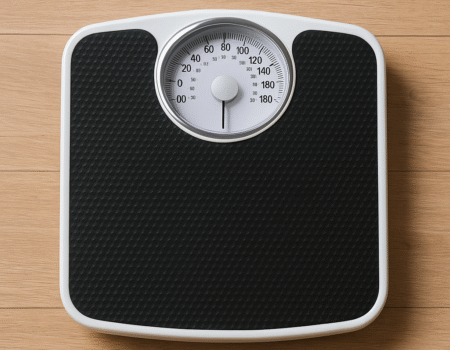Grow a Garden Calculator
Starting a garden is exciting, but it can also feel overwhelming. How many plants do you actually need? How much space will they take up? When should you start seeds, and what kind of harvest can you expect at the end of the season? Guessing often leads to frustration, wasted space, or uneven harvests. If not done right you might lose interest next year.
The Grow a Garden Calculator solves this problem. Enter a few details about your location, garden size, and the crops you want to grow. The calculator shows you plant counts, spacing, harvest estimates, and planting dates based on frost data in your area. Instead of trial and error, you get a clear plan you can follow.
When I first started gardening, I planted without a plan. One year I ended up with far too many cucumbers and hardly any carrots. Another year I had beds full of tomatoes but no greens for salads. A tool like this would have shown me exactly what to plant, and it would have saved me time and headaches. Now I let the calculator do the math, and my garden is balanced with the crops my family actually eats. And it saves us a ton of money.
Grow a Garden Calculator
Beds / Plots
Crops
What the Grow a Garden Calculator Does
This calculator is more than a basic spacing chart. It works as a garden planner, giving you:
Plant counts by crop – Clear numbers based on your goals instead of vague advice.
Garden space requirements – Total square footage you need, with suggestions for bed layouts.
Harvest estimates – Low, likely, and high yield ranges so you can plan realistically.
Planting dates – Indoor sowing, outdoor transplanting, and direct-sow dates that match your frost window.
Succession planting reminders – Suggested re-sow intervals for lettuce, beans, spinach, and other fast crops.
Companion planting tips – Warnings for problem pairings and suggestions for helpful combinations.
Rotation guidance – Reminders to rotate crop families to avoid soil-borne pests and diseases.
Water and fertilizer guidelines – Basic watering goals and simple feeding advice by crop type.
Each point is designed to help you move from guessing to actual planning.
Inputs You Provide
Location
Your ZIP code or postal code lets the calculator find your last spring frost and first fall frost. These dates determine when you can plant tender crops outdoors and when your season ends. Knowing your frost window prevents losing plants to unexpected cold.
Garden size
Enter the length and width of each bed or row. You can add multiple beds if needed. This helps the calculator assign space to each crop.
Number of people to feed
Select how many people your garden will support. Some families just want fresh salads. Others want enough produce to can, freeze, or store for winter. Plant counts adjust to your goals.
Crops to grow
Choose from common vegetables, herbs, and roots. You can also enter target harvest amounts, such as “20 pounds of tomatoes for sauce” or “lettuce for salads three times a week.”
Planting style
Raised beds allow tighter spacing and higher yields. Rows require more room for airflow and access. The calculator changes spacing rules depending on your choice.
Experience level
Beginners often get lower yields, while experienced gardeners usually get more per square foot. Yield ranges adjust so you see realistic numbers.
Plant Spacing and Yield Defaults
The calculator uses common home-garden averages for spacing, maturity, and yields. You can customize these if you know your specific variety details.
| Crop | Plant Spacing | Days to Harvest | Typical Yield |
|---|---|---|---|
| Tomatoes | 18–24 in | 70–85 | 8–15 lb per plant |
| Peppers | 12–18 in | 65–85 | 3–8 lb per plant |
| Cucumbers | 12 in | 55–65 | 10–15 per plant |
| Zucchini | 24–36 in | 50–60 | 8–20 lb per plant |
| Bush Beans | 4–6 in | 50–60 | 0.5–1.5 lb per foot of row |
| Pole Beans | 6–8 in | 60–70 | 1–2 lb per plant |
| Lettuce (heads) | 10–12 in | 45–60 | 1 head per plant |
| Lettuce (leaf) | 6–8 in | 30–45 | 0.25–0.5 lb per sq ft |
| Carrots | 2 in | 60–75 | 0.5–1 lb per foot of row |
| Beets | 3–4 in | 55–65 | 0.75–1.5 lb per foot of row |
| Onions | 4–6 in | 90–110 | 0.5–1 lb per foot of row |
| Garlic | 6 in | 240+ | 1 bulb per clove |
| Potatoes | 10–12 in | 80–100 | 2–5 lb per foot of row |
These numbers reflect averages under normal conditions with decent soil, water, and sun. Weather, variety, and care will affect your actual harvests.
Example Garden Plans
Salad Garden for Two
Two raised beds, each 4×8 feet. Crops include lettuce, spinach, carrots, cucumbers, cherry tomatoes, and basil. The expected harvest is 20 to 30 pounds of greens, 25 to 40 cucumbers, and 15 to 25 pounds of tomatoes, plus herbs and root vegetables. By sowing lettuce and spinach every few weeks, you’ll have salads from spring to fall.
Family of Four with Preserving Goals
Three raised beds, each 4×10 feet. Crops include tomatoes, peppers, beans, cucumbers, carrots, beets, kale, and herbs. The expected harvest is 70 to 100 pounds of tomatoes, 15 to 25 pounds of peppers, 40 to 60 cucumbers, and 20 pounds or more of beans. Root crops and leafy greens fill the rest. The plan includes fall spinach and staggered beans for steady harvests.
Planting Dates and Frost Windows
The calculator builds a planting calendar for you. You’ll see:
- Last spring frost: when it’s safe to move tender plants outside
- First fall frost: when your season ends and fall crops need to be mature
- Indoor seed-starting dates for tomatoes, peppers, and other long-season crops
- Direct-sow dates for beans, carrots, radishes, and other fast crops
This takes the guesswork out of timing and keeps your garden on schedule. Moisture is key when growing a garden, getting lots of snow in the winter will keep your ground wet in the spring if there’s no natural run-off.
Succession Planting
Many crops are best planted in waves rather than all at once. The calculator suggests re-sowing intervals so you can keep harvesting:
- Lettuce: every 2 to 3 weeks
- Radishes: every 2 weeks in spring and fall
- Bush beans: every 3 to 4 weeks until midsummer
- Spinach: spring, and again in late summer for fall harvests
Succession planting ensures a steady supply instead of a flood followed by nothing.
Watering and Fertilizing
Most vegetables need about 1 inch of water per week. The calculator reminds you to increase water during hot spells and mulch to conserve moisture.
Fertilizer advice is simple and practical:
- Leafy greens do best with small, frequent feedings.
- Fruiting crops like tomatoes and squash benefit from compost at planting, then side-dressing during fruiting.
- Root crops need balanced nutrition, but avoid too much nitrogen or you’ll get lush leaves with small roots.
Companion Planting and Rotation
The calculator flags combinations to avoid and ones to encourage. Examples include:
- Do not plant tomatoes near potatoes because they share diseases.
- Basil grows well near tomatoes and can improve flavor.
- Rotate crop families each year to keep soil healthy and reduce pest pressure. For example, avoid planting nightshades in the same bed two years in a row.
Frequently Asked Questions
How many plants do I need per person?
It depends on eating habits. For fresh salads, one person might need 6 to 8 lettuce plants in rotation, 2 cucumber plants, and 2 or 3 tomato plants. For preserving, plan for more.
How big should a garden be for a family of four?
A small fresh-eating garden might be 200 to 400 square feet. If you want to can or freeze produce, aim for 500 to 800 square feet with several raised beds.
Which crops give the highest yield for the space?
Leafy greens, beans, and herbs are high-yield per square foot. Trellised crops like cucumbers and indeterminate tomatoes also produce heavily in small spaces.
Can I grow enough food to replace groceries?
Most home gardens supplement groceries rather than replace them. However, you can grow all your salad greens, herbs, and a large share of summer vegetables if you plan well.
What’s the difference between rows and raised beds?
Raised beds use closer spacing and produce more per square foot. Rows require wider spacing but are better for large crops like corn or potatoes.
How accurate are the yield estimates?
They are averages. Weather, soil, and care make a big difference. That’s why the calculator shows low, likely, and high yields instead of just one number.
When should I start seeds indoors?
Most warm-season crops like tomatoes and peppers should be started indoors 6 to 8 weeks before your last frost. The calculator will give exact dates for your area.
What’s the Rule of 72 in gardening?
While often used for finance, some gardeners use it as a reminder that planning early doubles your efficiency. The real takeaway is that time matters in gardening—start early for better harvests.
How do I avoid planting too much of one thing?
Set goals instead of guessing. For example, decide that you want lettuce twice a week or 20 pounds of tomatoes for sauce. The calculator translates those goals into plant counts.
How often should I water my garden?
Water deeply once or twice a week instead of daily light watering. This encourages strong root growth. Always adjust based on weather.
Do I need to rotate crops every year?
Rotation helps prevent soil-borne diseases. Avoid planting the same crop family in the same spot two years in a row.
Can I use this calculator for container gardening?
Yes. The same spacing applies, but yields will be smaller. Choose compact varieties for pots and focus on lettuce, peppers, herbs, and cherry tomatoes.
Final Thoughts
The Grow a Garden Calculator takes the stress out of garden planning. It gives you exact plant counts, space requirements, and realistic yield estimates. You’ll also know when to sow seeds and how to keep harvests coming all season long.
I used to waste time and space by guessing. Once I started planning with clear numbers, my garden became more productive and less frustrating. Whether you’re feeding yourself, your family, or preserving food for winter, this tool helps you grow exactly what you need without the guesswork and stress. If you’re not using it send it to a friend so they can try it.






